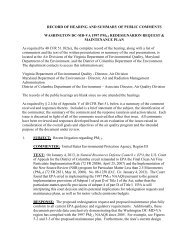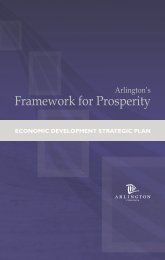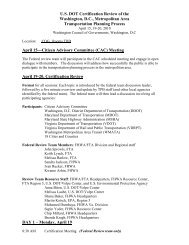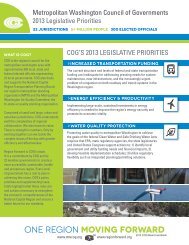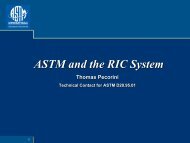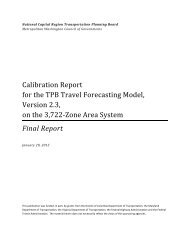PTI Local Government Energy Assurance Guidelines - Metropolitan ...
PTI Local Government Energy Assurance Guidelines - Metropolitan ...
PTI Local Government Energy Assurance Guidelines - Metropolitan ...
You also want an ePaper? Increase the reach of your titles
YUMPU automatically turns print PDFs into web optimized ePapers that Google loves.
Although the concept of interdependencies may not be new or novel to some, additional thoughtful consideration<br />
is needed as to how it applies to energy and other sectors of the economy. Even as early as 1997, a report from the<br />
President’s Commission on Critical Infrastructure Protection noted that energy is the lifeblood of our interdependent<br />
infrastructures, and routine disturbances can cascade into a regional outage. That Commission also noted that<br />
technical complexities may permit vulnerabilities to go unrecognized until a major failure occurs. The August 2003<br />
blackout in the Midwest and Northeastern United States and Canada was triggered by just such a disturbance. 4<br />
A series of incidents started by a power line sagging into a tree in Cleveland, Ohio, cascaded across critical<br />
infrastructures, resulting in significant loss or degradation of essential services in numerous States. Table 2 illustrates<br />
three types of infrastructure interdependency failure.<br />
Table 2. Types of Infrastructure Interdependency Failure<br />
Failure Type<br />
Cascading<br />
Escalating<br />
Common Cause<br />
Description<br />
A disruption in one infrastructure causes a disruption in a second infrastructure; for example, a<br />
loss of energy causes a wastewater treatment plant to shut down.<br />
A disruption in one infrastructure exacerbates an independent disruption of a second<br />
infrastructure; for example, the time it takes for restoring banking services is prolonged because<br />
telecommunications lines and signals are not available.<br />
A disruption of two or more infrastructures at the same time is the result of a common cause;<br />
for example, a tornado simultaneously adversely impacts the availability of electric power,<br />
petroleum, clean water and telecommunications.<br />
Source: James P. Peerenboom, Ronald E. Fisher, “Analyzing Cross-Sector Interdependencies,”40th Annual Hawaii International<br />
Conference on System Sciences (HICSS’07), 2007 http://www.computer.org/portal/web/csdl/doi?doc=doi/10.1109/HICSS.2007.78.<br />
There are four general categories of infrastructure interdependency: 5 physical, cyber, geographic, and logical. These<br />
categories are described in Figure 1.<br />
These infrastructure interdependencies vary<br />
in scale and complexity, ranging from local<br />
linkages (municipal water supply services and local<br />
emergency services) to regional linkages (electric<br />
power coordinating councils), to national linkages<br />
(interstate natural gas and transportation systems)<br />
and to international linkages (telecommunications<br />
and banking and finance systems).<br />
Figure 1. Categories of Infrastructure Interdependency<br />
Physical<br />
Material output of<br />
one infrastructure<br />
is used by another<br />
Cyber<br />
Infrastructures utilize<br />
electronic information<br />
and control systems<br />
One of the first steps in developing an EAP, and<br />
thereby mitigating the possible consequences of an<br />
energy emergency, is to understand the dependent<br />
relationships among energy infrastructures, key<br />
local services and valued community assets.<br />
Geographic<br />
Infrastructures are<br />
co-located in a<br />
common corridor<br />
Logical<br />
Infrastructures are<br />
linked through<br />
financial markets<br />
4<br />
James P. Peerenboom, Ronald E. Fisher, “Analyzing Cross-Sector Interdependencies,”40th Annual Hawaii International Conference on<br />
System Sciences (HICSS’07), 2007 http://www.computer.org/portal/web/csdl/doi?doc=doi/10.1109/HICSS.2007.78.<br />
5<br />
Rinaldi, Peerenboom and Kelly, “Identifying, Understanding and Analyzing Critical Infrastructure Interdependencies,” IEEE Control<br />
Systems Magazine, 2001.<br />
<strong>Local</strong> <strong>Government</strong> <strong>Energy</strong> <strong>Assurance</strong> <strong>Guidelines</strong> – Version 2.0 | 9



